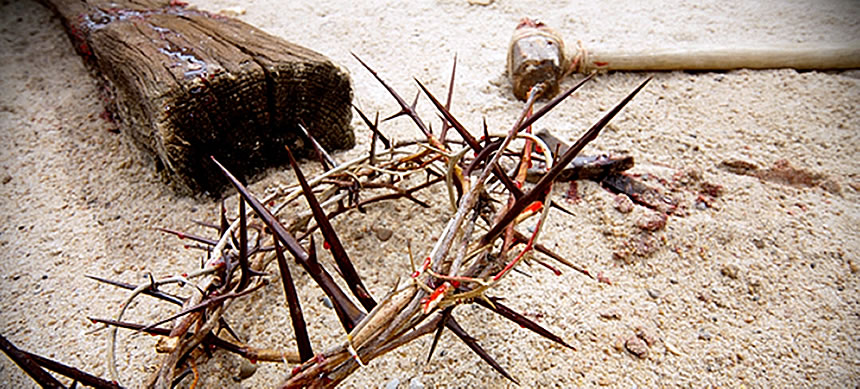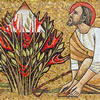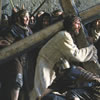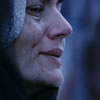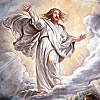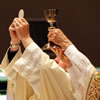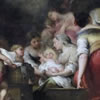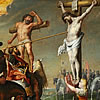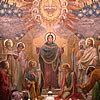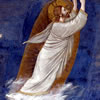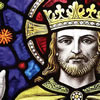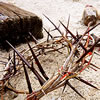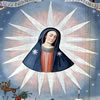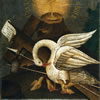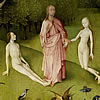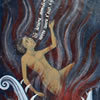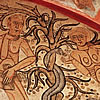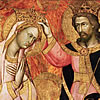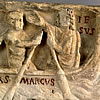Inside The Passion of the Christ - Part 1/3
We have probably watched The Passion of the Christ at least once. For others, it is more than once. And yet for others, it is an annual Lenten“ritual”. For someone who is familiar with the Gospels, we find some scenes in the film that are in fact not found in Scripture. The first knee-jerk reaction is to criticize the writers of the film for including“strange" material. However, an insider by then name of Fr. John Bartunek, who watched the filming of the movie, offers insights to these scenes in his book Inside the Passion. (It was printed in 2005 and is no longer being printed. In fact, I had to buy my copy on Amazon from a second-hand book dealer.) In this article, let me share with you some fascinating insights of Fr. Bartunek on these scenes.
The Snake in Gethsemane
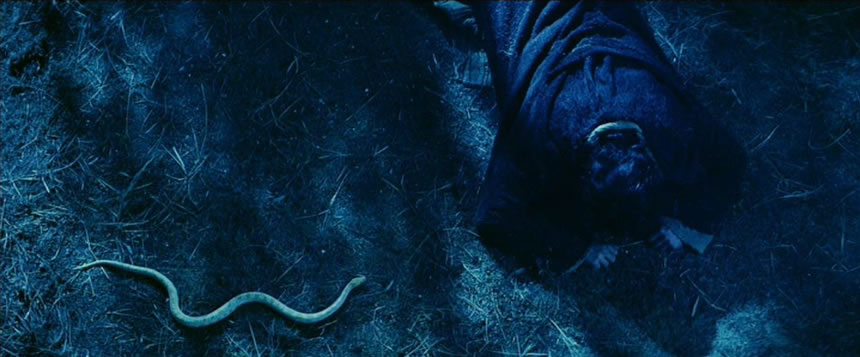
The Economy of Salvation depends on Christ’s obedience to the Father, for it is through his obedience to suffer and die that we are saved. The first scene of the movie is the Agony in the Garden where Christ battles a huge temptation. The temptation is represented by an androgynous person – Satan of course – whispering things to Christ to make him doubt that his Passion will amount to anything:“Do you really believe that one man can bear the full burden of sin? No one man can carry this burden, I tell you. It is far too heavy. Saving their souls is too costly. No one. Ever. No. Never.” Satan even makes him doubt himself:“Who is your father? Who are you?"
One of the things we see in this scene is a snake. It was meant to remind us of the Garden of Eden where a serpent tempted Adam and Eve into disobeying God. It alludes to the poetry of Salvation History where Adam represents all of humanity when he disobeyed God, and where Christ represents all of humanity when he obeys God – both of which were in a garden. This, of course, suggests that Christ is a New Adam, who repairs humanity’s relationship with God that was damaged by the original Adam.
To strengthen the relationship of this scene with the Genesis story, we see Christ crushing the head of the snake that is a reference to God’s promise to the serpent:
I will put enmity between you and the woman, and between your offspring and hers;
They will strike at your head, while you strike at their heel. Genesis 3:15
The Arrest
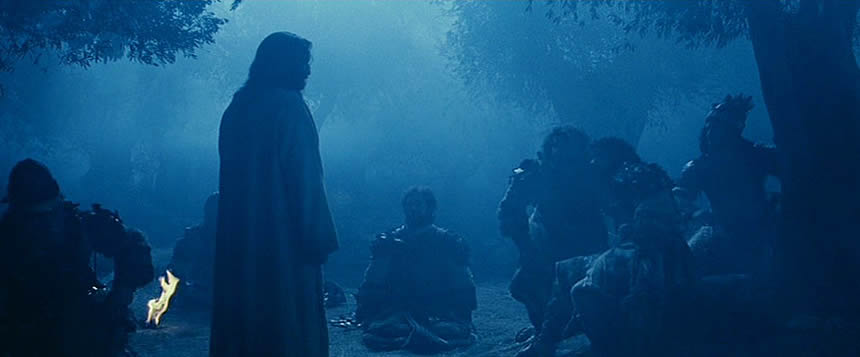
One of the episodes that have an incredible behind-the-scenes story is taken from the Gospel of John:
Jesus, knowing everything that was going to happen to him, went out and said to them,“Whom are you looking for?" They answered him,“Jesus the Nazorean.”* He said to them,“I AM.” Judas his betrayer was also with them. When he said to them,“I AM," they turned away and fell to the ground. John 18:4-6
"I AM" is the holy name of God gave to Moses in Exodus 3:14. It is a revered name in Hebrew and Jewish culture. So in the Bible scene, John expresses how almighty this name is so that by its mere mention by God himself (in the person of Christ) those who hear it fall down.
This scene is Biblical, but the movie didn’t intend to recreate the scene: it is there by coincidence. Father Bartunek reveals that the scene was unchoreographed. It wasn’t shot in one take where the wide shots were filmed first, and then the close-ups. When the scene was“cut" so the camera could pull out to shoot from a distance again, the actors were instructed to take their places when the scene was stopped. When they resumed their positions, everyone was on the ground except for Jesus. To quote Fr. Bartunek,“What was purposely avoided in favor of believability had actually happened.” It seems someone up there wants that scene intact all right.
Mary and the Passover
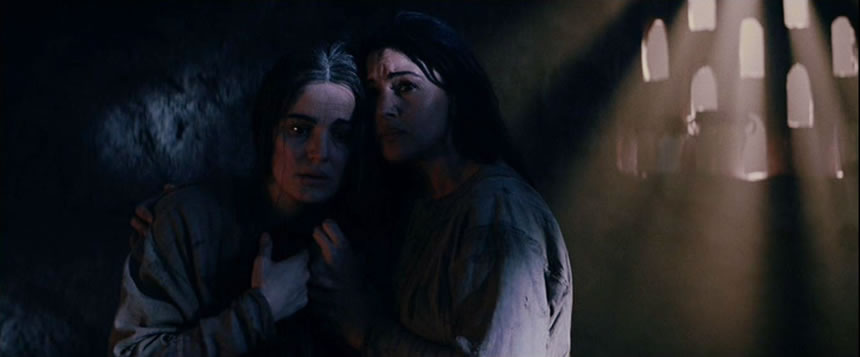
In this non-scriptural scene, Mary wakes up as if realizing something horrific, and Mary Magdalene comes to see what has happened. Mary asks, "Why is this night unlike every other night?"
Christians may not know these phrases because it comes from the Passover Seder meal. Maia Morgenstern, a practicing Jewish woman who plays Mary in the movie, asked permission if she could add these lines. It made sense because it fit perfectly with what was happening and so it was included in the final cut.
The Passover is an annual event that Jews celebrate in memory of their release from Egyptian bondage. At the beginning of the meal, the question is asked: "Why is this night unlike every other night?" The appropriate response is: "Because once we were slaves and now we are slaves no longer... on this night we were led from captivity to freedom.” This is Mary Magdalene’s response to Mary in the movie. To understand why this fits we need to understand the original Passover, which is“recreated" in the Passover celebrations.
In the book of Exodus, we learn that the Egyptians feared that the growing number of Israelites would come to point where they will be overpowered, so they devised ways to control that number and, in fact, made the lives of the Israelites more miserable by the way they were treated. God“heard" the groaning of his people and asked Moses to mediate with the Pharaoh for their release. Despite experiencing the nine plagues described in the book of Exodus, Pharaoh’s heart was so hardened to accede to God’s command to let the Israelites free. One last plague was sent so that all the firstborn would die.
However, God commanded that the Israelites should eat a meal. They should slaughter a lamb, smear the blood on the door’s wooden posts and lintel, and then cook and eat the lamb. When this is performed the angel of death will pass over their house so that the household will be spared. The next morning all the first-born of the Egyptians were found dead but the first-born of the Israelites were alive. It is this moment Pharaoh releases the Israelites who leave hastily.
This is the Passover meal that every Jew recreates through this celebration. This Passover meal is the Last Supper meal that Christ ate with his apostles. It is very apt because the next day Jesus (who John the Baptist refers to as the“lamb of God" in John 1:29) is slaughtered, his blood is smeared on the wood of the cross, and whose body was given to us to eat (John 6, Matthew 26:28, Luke 22:19) It is the act that repairs our relationship with God and frees us from the spiritual death brought about by original sin, and gives us the grace to free ourselves from the slavery of our attraction to sin. The parallel and foreshadowing cannot be any greater. So when Mary speaks the opening lines of the Passover, it refers to the new and more perfect Passover that the New Adam is performing.
Judas and Jesus meet; Peter and Mary Meet
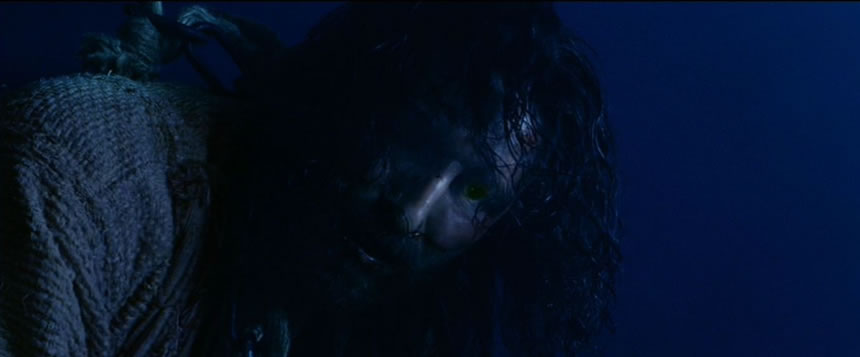
There is a scene when Jesus is being led away by the guards of the High Priest. They pass a bridge and because of the intensity of the blows, Jesus falls off the bridge only to be dangling by the chains that secure him. In the few moments that he is dangling, he sees Judas and they stare at each other’s eyes.
This non-scriptural scene was included to impress on us that Judas had a chance to repent of his betrayal. In the scene, the eyes of Jesus pierce Judas as if waiting for him to say sorry. A few seconds pass and Jesus is yanked back up. The moment is gone, and so is the opportunity for Judas to show any sign of repentance to him. The next thing that happens is we see a freakish demon appear from the shadows to haunt poor Judas who drives him mad and runs away.
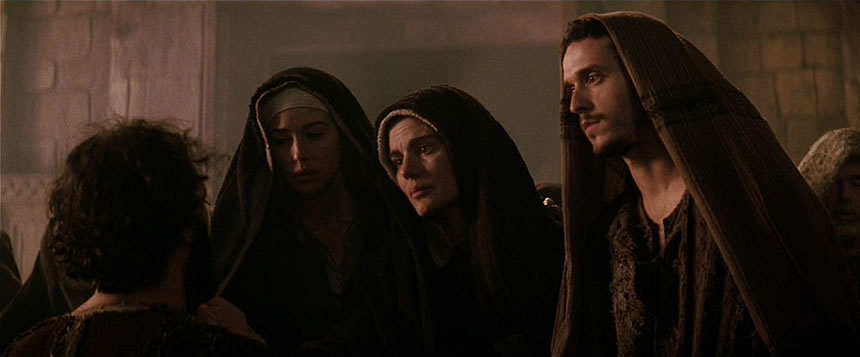
Another non-scriptural scene that should be conceptually juxtaposed to this is the meeting of Peter and Mary. After Peter realizes he has betrayed Jesus three times, he runs away just like Judas does. On his way, however, he stumbles upon Mary, kneels down, and asks forgiveness. It is the exact opposite reaction of Judas. Peter, instead, makes an act of repentance. He cannot say it to Christ (he will after the Resurrection when he confesses his love for Christ three times in John 21) but he feels so bad that he needs to tell it to Mary, whom he also feels he has betrayed in a way.
These two scenes contrast the different ways the two apostles deal with their guilt.
The Demise of Judas
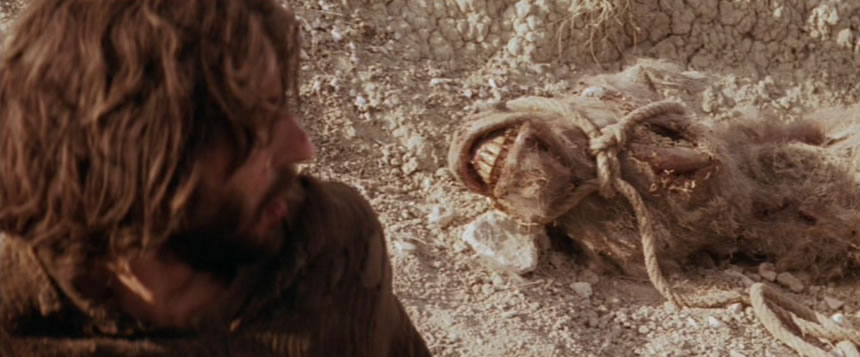
In the scene when Judas can no longer take his guilt, he finds himself beside a camel infested with maggots, and whose teeth seem to sneer at him. While there is no biblical reference to this scene, it is included for its allusion to damnation, which drives Judas to the brink of despair and so hangs himself.
The maggots remind him of Isaiah 66:24 and Mark: 9:47-48:
Better for you to enter into the kingdom of God with one eye than with two eyes to be thrown into Gehenna, where ‘their worm does not die, and the fire is not quenched.’
The teeth remind him of Matthew 13:49-50:
Thus it will be at the end of the age. The angels will go out and separate the wicked from the righteous and throw them into the fiery furnace, where there will be wailing and grinding of teeth.
The teeth and worms are the visual representation of his destiny. He forgets that God is merciful and is driven to a sense where he loses all hope. It is chilling when we realize that the rope he hung himself with is the same rope that was around the camel’s (damnation’s) neck.
Continued in Part 2
[originally posted on March 9, 2016]
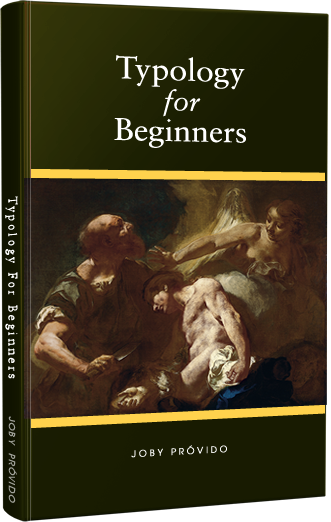
Typology for Beginners
A Catholic Perspective on understanding the New Testament through the Old Testament
First-century Jews converted to Christianity in droves because of the way the New Testament was written to show Jesus was the Messiah promised by the Old Testament. We also learn about how Mary is the New Eve and the Ark of the Covenant in the way the writers portray her.
Through typology, the patterns that connect the Old and New Testaments make the Bible stories more accessible so that one becomes excited to read Sacred Scripture again.
Get your copy now either in Hardbound, Paperback, or Kindle
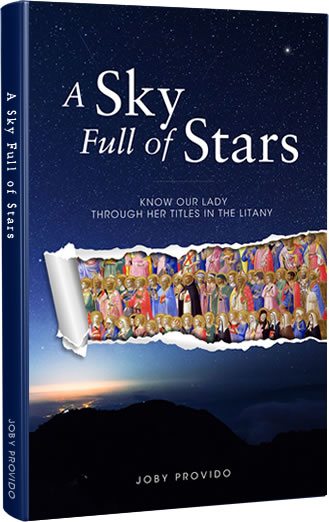
A Sky Full of Stars
Know Our Lady through her Titles in the Litany
The Church helps us understand who Mary is by honoring her with different titles in the Litany of the Blessed Virgin Mary. Unfortunately, over time and difference of culture, we might not grasp what it is the Church is ascribing to her and lose that opportinity to get to know her.
In A Sky Full of Stars, each title of the Litany is explained so we get know Mary more and fall in love with her all over again.
Get your copy now either in Hardbound, Paperback, or Kindle
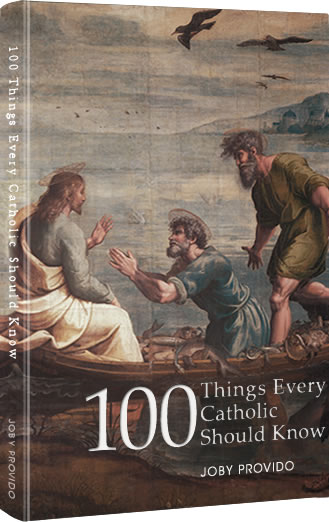
100 Things Every Catholic Should Know
Whether or not you are new to the Catholic Church, or struggling, or lapsed, or dynamically involved, this book will enlighten you with the essentials of the Faith that have been handed down to us by the apostles.
Each of the 100 topics is easy to read and distilled into bite-sized portions. Through cross-referencing, the book also shows how the topics are interrelated. Those who are new to the Faith will find this book an edifying handy reference, and those who have simply forgotten will find it a great review material that might spark a new love for God and religion.
Get your copy now either in Hardbound, Paperback, or Kindle
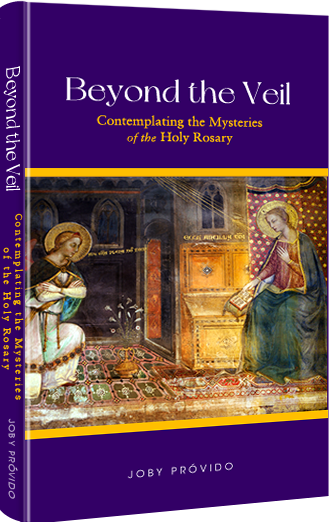
Beyond the Veil
Contemplating the Mysteries of the Holy Rosary
Prayer giants like Pope St. John Paul II, Pope Paul VI, Bl. Archbishop Fulton Sheen, and Bishop Robert Baron advocate that we contemplate on the mysteries of the rosary while we say the vocal prayers. Unfortunately, there are not many books that teach us how to do this. Beyond the Veil comes to the rescue by suggesting seven ways we can pray the rosary the way it was intended.
The larger part of the book offers mental images for each of the mysteries we can use in our contemplation, for how can we imagine the scenes in the rosary if we don't know about them?
Get your copy now either in Hardbound, Paperback, or Kindle


